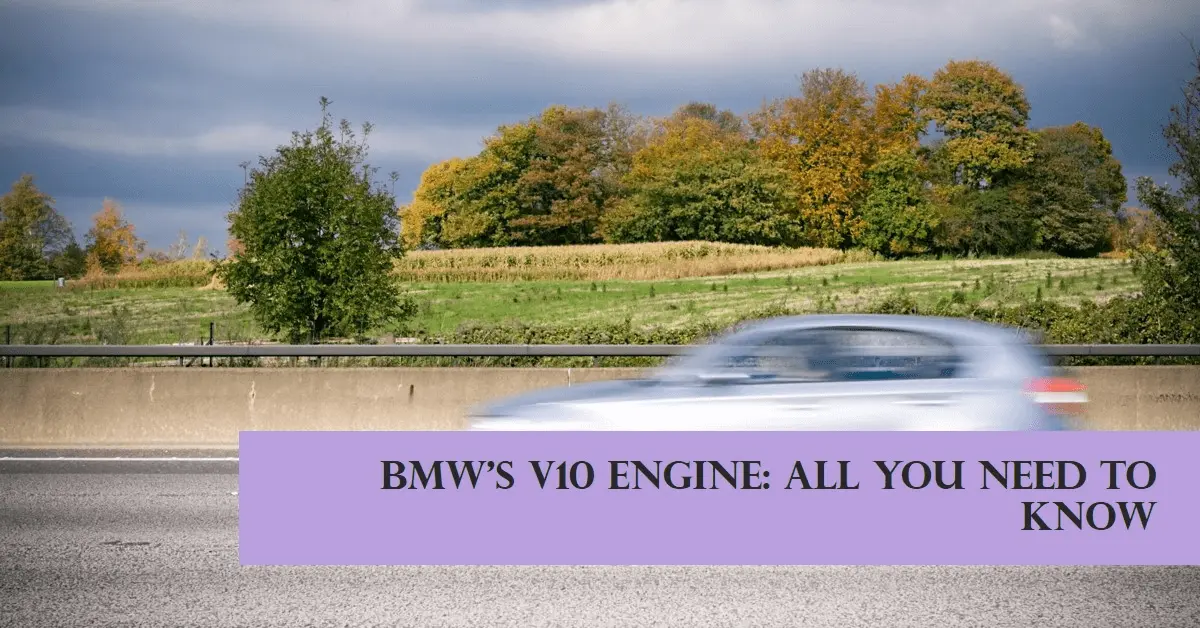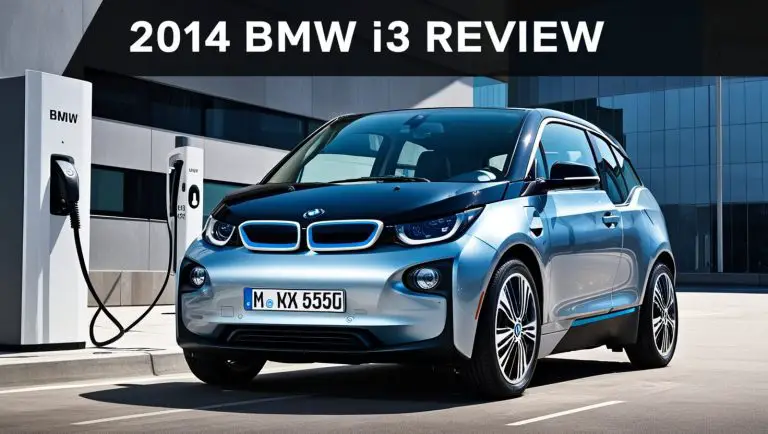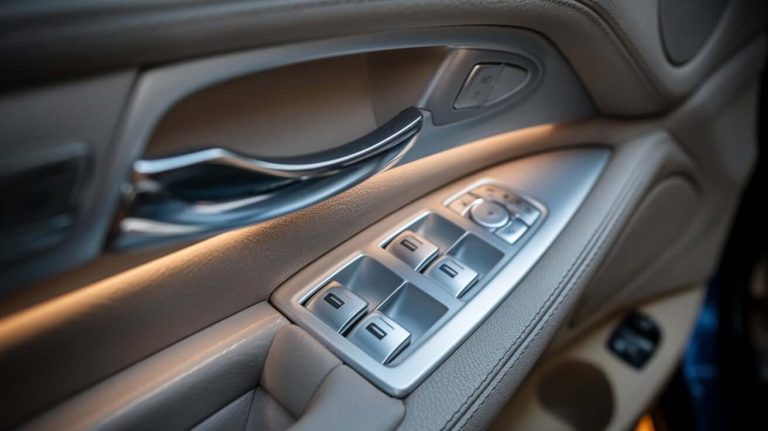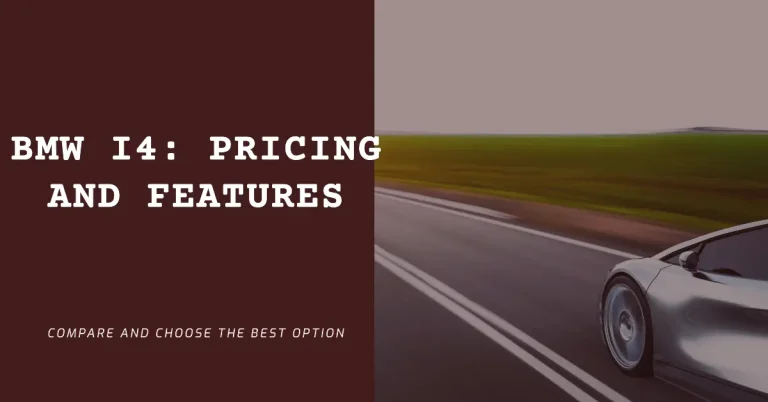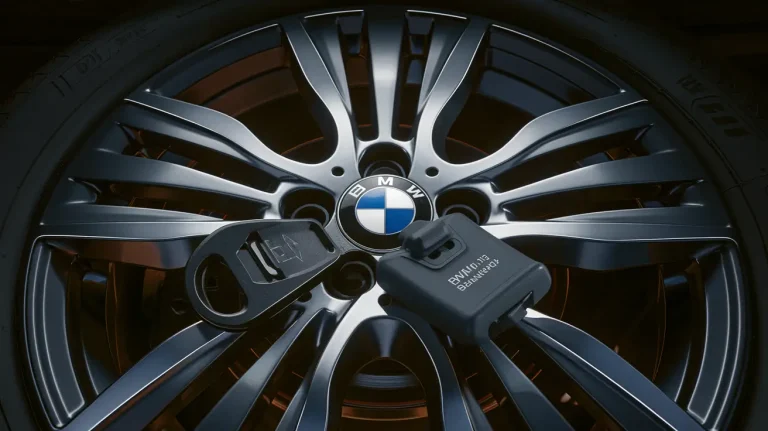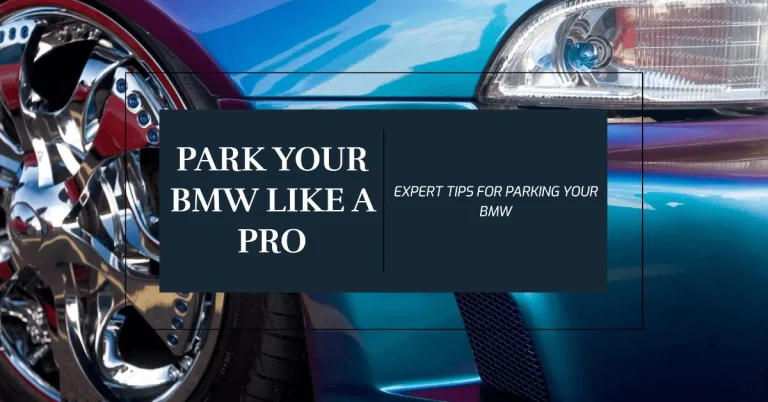What BMW Has a V10 Engine? All Explained!!
Have you ever wondered what BMW has a V10 engine? As it turns out, there’s only one – the legendary S85. BMW’s one-of-a-kind 5.0L V10 powered just two models in the company’s lineup: the E60/E61 BMW M5 and E63/E64 BMW M6 high-performance cars.
In this in-depth guide, we’ll explore BMW’s iconic and award-winning V10 engine. You’ll learn about the models equipped with this powerplant and why it left such an enduring legacy of performance and prestige.
Overview of BMW’s Sole Production V10 Engine: The S85
BMW has a long history of crafting some of the finest engines in the automotive world. From silky inline-sixes to snarling V8s and V12s, BMW Motorsport (the company’s performance division) has built quite a reputation.
However, there’s only one production V10 engine in BMW’s catalogue – the S85. Produced from 2005 to 2010, this 5.0L naturally aspirated ten-cylinder engine powered the E60/E61 BMW M5 sedan and wagon along with the E63/E64 BMW M6 coupe and convertible.
Technical Specs and Performance Credentials
Let’s examine some key technical details of BMW’s S85 V10:
- 5.0L displacement
- 10 cylinders
- Natural aspiration (no turbocharging or supercharging)
- 500 horsepower
- 384 lb-ft of torque
- 8,250 rpm redline
With 500 eager horsepower on tap and an appetite for revs, the S85 could propel the M5 sedan to 60 mph in just 4.5 seconds. The wicked engine note building to a banshee wail near redline only added to the experience.
Clearly BMW wasn’t playing around when they developed this powerplant. But not only did it perform admirably – it also gained critical acclaim in the process.
Accolades and Impact: Cementing BMW M’s Reputation
The S85 V10 engine brought immense glory to BMW upon its debut. It won the coveted International Engine of the Year Award an astonishing four years straight from 2005-2008. Against stiff competition, it beat out rivals to dominate the Over 4.0 Liter displacement category for four consecutive years – a feat never duplicated since.
Enthusiasts praised its linear power delivery and spine-tingling soundtrack. The engine became synonymous with BMW’s tradition for delivering engaging performance. For a brand steeped in racing heritage, the S85 represented the pinnacle of their engineering prowess.
Powering the E60 M5 sports sedan signified the birth of a V10 hyper-sedan segment as well. No longer were insanely powered saloon cars restricted to V8s. BMW proved that excess has no limits in their pursuit of performance.
Clearly, the S85 holds a special place in BMW’s history as a force to be reckoned with. Next let’s examine the two models that were gifted this masterpiece under their hoods.
The High-Performance BMWs Gifted with the S85 V10
Only two models in BMW’s entire production vehicle history got to utilize the magnificent S85 powerplant. These special machines are none other than:
BMW M5 (E60/E61 generation)
As the company’s revered midsize high-performance sedan, slotting in a V10 engine seemed fitting for BMW’s M5 model. Sold in several body styles including the E60 sedan and long roof E61 Touring wagon variant (produced only 1025 units), the fourth-generation 2005-2010 M5 remains an icon.
It etched its name in the record books as the first production sedan equipped with a V10 engine from the factory. While some consider it the purest embodiment of an unadulterated M5, it wasn’t without flaws. Early models were saddled with subpar single-clutch automated manual gearboxes. Fuel economy was abysmal and reliability proved sketchy.
Yet once enthusiasts sampled the shrieking V10 topping out at a lofty 8,250 rpm, other gripes faded into memory. This is a car that plays as hard as it looks. And the unrelenting forward thrust provided by its V10 engine became the stuff of legend.
BMW M6 (E63/E64 generation)
As the two-door variant of BMW’s 5 Series, the 2006-2010 E63 (coupe) and E64 (convertible) M6 models were also gifted with the S85 V10 engine. Producing the same 500 horsepower as its M5 cousin, the M6 range created an enticing proposition for buyers.
Grand touring coupes and convertibles equipped with an ultra-high revving and exotic-sounding 10-cylinder racing engine seemed like a match made in heaven. It offered discerning drivers open-air motoring coupled with a thunderous motorsports-derived powerplant – a unique combination indeed.
And like the M5, that glorious V10 was paired with a 7-speed automated manual gearbox or a traditional 6-speed manual in North American examples. The end result was a stylish, comfortable long distance cruiser that just so happened to wield a formula 1-inspired engine note.
Why the S85 V10 Became such a Legendary Engine
Bolting a massively overpowered V10 into refined executive-class vehicles seems delightfully unhinged. However, this daring experiment is precisely why BMW’s one-off engine gained such notoriety.
For starters, the visceral driving experience and auditory theatrics left drivers gobsmacked. Accelerating through the rev range as those 10 cylinders become more frenetic is automotive euphoria defined. Add the assault on your eardrums as the engine shrieks, barks, and bellows while climbing towards redline and it’s easy to become intoxicated in more ways than one.
Moreover, the S85 maintained its performance legitimacy by capturing International Engine of the Year award four years in a row – a feat of utter dominance unsurpassed by any other powerplant.
When you couple the charismatic power delivery with an F1-inspired soundtrack and racing pedigree born from years of dominance in the European touring car championships, it’s clear why this mill holds such appeal. The S85 is as close as it comes to fitting a competition-spec engine into a road car whilst maintaining (somewhat) streetable civility.
In short – this was an engine designed as much for heart pulling theatrics as it was for sheer speed. And enthusiasts wouldn’t want it any other way.
The Enduring Legacy of BMW’s S85 V10
Alas, the S85’s tenure was relatively short-lived. As emission regulations became stricter and BMW transitioned to turbocharging across more models, the free-breathing 10-cylinder motor saw its swansong in 2010.
But that scarcely tarnished its legacy. A one-of-a-kind engine available in just two specialty M models over five model years was destined to become a collector’s item from inception.
Today, the S85 lives on through the cult following who refuse to part with their M5s and M6s. Aftermarket companies also help extend its lease on life via performance upgrades extracting even more power.
Surely BMW will never build an engine like this again. Its success came from an era where excess and theatrics still ruled the day. Yet that unchecked passion to create something uniquely invigorating is precisely why we still celebrate the S85 to this day.
When reflect upon BMW’s long and lustrous engineering heritage, the scream of that curvaceous V10 at full pelt deserves its own chapter. What other powerplant can unleash such fury with symphonic majesty in one adrenaline-soaked package?
Conclusion
So there you have it – the complete history behind BMW’s lone V10 engine found in the E60/E61 M5 and E63/E64 M6 high-performance models. This bespoke 5.0L naturally aspirated engine – codenamed the S85 – left an indelible legacy between 2005 to 2010 through its immortal iron-fisted performance packaged with unmistakable auditory character.
From dominating its award class four years consecutively to cementing the M brand’s status to providing the most unforgettable driving experience, the S85 establishes BMW’s racing pedigree beyond the shadow of a doubt.
It’s an engine that pulled no punches and craved revs like an addict. The resulting soundtrack and endless thrust quickly eroded any notions of practicality or fuel efficiency. But did anyone truly care? Heck no.
The S85 played exclusively to our adrenaline glands and auditory senses – practical be damned. It’s precisely this attitude that defined the powerplant’s charm and success. And BMW was all the better for embracing the madness.
What other automaker can boast a 500 horsepower exotic V10 squeezed under the hood of sensible executive sedans and coupes? Who else would dare to try?
That my friends is precisely why we celebrate BMW’s signature masterstroke – the S85 V10 – to this very day even as its production faded into history. Some classics truly stand the test time, however fleeting their lifespan may have been.

